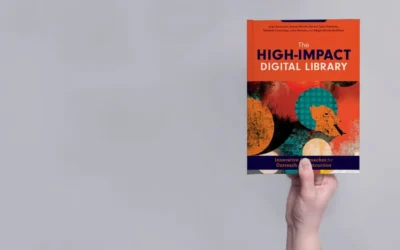Using QR Codes in Special Libraries
Lauren Hays
QR codes are certainly not new. However, I have seen them used in some innovative ways over the last two years as we have all adjusted to doing things remotely.
What are QR codes?
For those of you who may be unfamiliar with QR codes, they are a type of barcode that can be scanned by a mobile device. The QR stands for quick response. When the barcode is scanned the mobile device can open a form, webpage, image, or other type of information.
How to create a QR code
To create a QR code you can use a free QR code generator online. Some of my favorites are:
QR-Code-Generator: https://www.qr-code-generator.com/
QRCode-Monkey: https://www.qrcode-monkey.com/
QR Stuff: https://www.qrstuff.com/
Each of these allows you to create a QR code with just a few clicks. You can select a size and the type of information you want to share with the QR code with each generator. All three generators do have unique features such as being able to select different colors, different borders, or to select a logo.
Ways to use QR codes
Originally, many QR codes were placed on print documents or in physical locations. People would scan the code with a QR code reader app and view the information shared.
Now, most mobile phones allow you to scan the QR code with the native camera app. Additionally, instead of placing QR codes on print or in physical locations, I have seen QR codes used in digital environments. For example, I recently attended a live event online and the hosts shared a QR code on their slides. When I scanned the code it took me to a form where I could log my attendance and receive a certificate.
Another example of a QR code in a digital environment is when they are used to augment content. Specifically, QR codes can be used to open an app on a mobile device. If your organization frequently uses a tool such as Slack, you can use a QR code on a presentation slide, have individuals scan it, and a particular channel in Slack can appear. This can be one way to bring people together faster than having everyone click on a link, especially if you know people primarily interact with a tool on a mobile device.
If you have a digital library, QR codes can be added to spaces to bring up augmented content that you want individuals to interact with on a mobile device.
Conclusion
Using QR codes on print resources and in physical locations remains a good option for many, but as we continue to work in digital environments there are good use cases for QR codes in online spaces as well.
Additional resources on QR codes for today’s use cases:
QR Codes are Here to Stay. So is the Tracking They Allow. Published in the New York Times.
The Resurgence of the QR Code And What It Could Mean for Your Brand.
Lauren Hays
Lauren Hays, PhD, is an Assistant Professor of Instructional Technology at the University of Central Missouri, and a frequent speaker on topics related to libraries and librarianship. Her professional interests include information literacy, educational technology, library and information science education, teacher identity, and academic development. Please read Lauren’s other posts about skills for special librarians. And take a look at Lucidea’s powerful integrated library systems, SydneyEnterprise, and GeniePlus, used daily by innovative special librarians in libraries of all types, sizes and budgets.
Similar Posts
Researching with GenAI: Tools & Tips for Special Librarians
When GenAI first became widely available, there was a great deal of discussion about how it would “hallucinate”—that is, make up content and sound very sure of itself when doing so.
Interview with the Author: Anna Neatrour on The High Impact Digital Library
Many different types of libraries have digital components, and it is important to get those digital collections in front of stakeholders.
Interview with the Editors: Wieland and Rogers on Interdisciplinary Archival Science
Alexandra Wieland and Corinne Rogers co-edited Archival Science in Interdisciplinary Theory and Practice. My interview with them is below.
Interview with the Author: Monica Berger on Predatory Publishing
Predatory publishing is a concern in all areas of librarianship. In special libraries, librarians work with experts in various fields. It is vital that special librarians understand the sector-relevant publishing landscape, and which publications maintain academic integrity.




Leave a Comment
Comments are reviewed and must adhere to our comments policy.
0 Comments